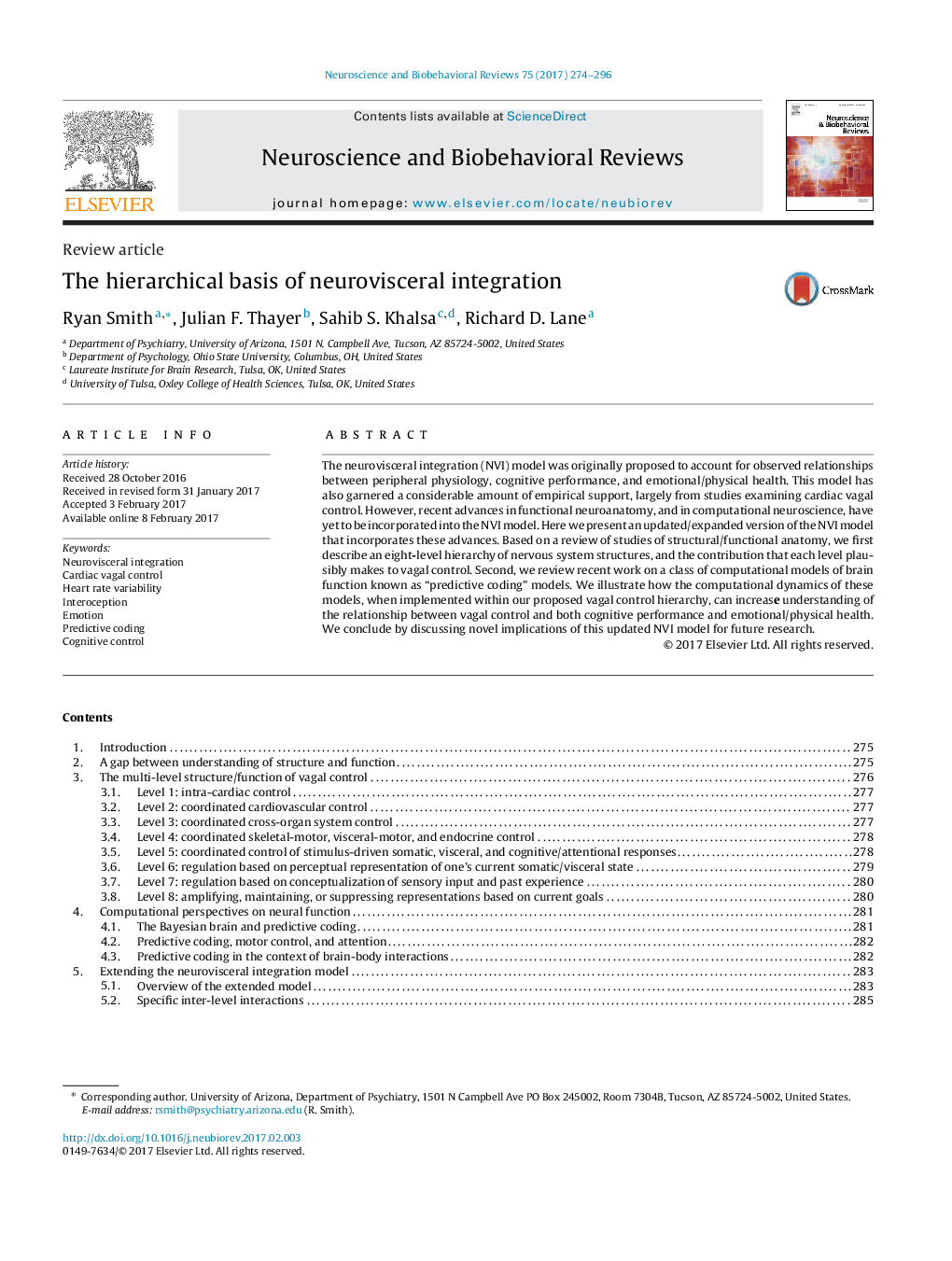| کد مقاله | کد نشریه | سال انتشار | مقاله انگلیسی | نسخه تمام متن |
|---|---|---|---|---|
| 5043513 | 1475296 | 2017 | 23 صفحه PDF | دانلود رایگان |
- Neurovisceral integration (NVI) theory has received considerable empirical support.
- A detailed model of the functional neuroanatomy underlying NVI findings is lacking.
- We describe an eight-level neural hierarchy underlying NVI and cardiac vagal control.
- The interactions within this hierarchy may implement predictive coding computations.
- Implications for understanding physiology, emotion, and cognition are discussed.
The neurovisceral integration (NVI) model was originally proposed to account for observed relationships between peripheral physiology, cognitive performance, and emotional/physical health. This model has also garnered a considerable amount of empirical support, largely from studies examining cardiac vagal control. However, recent advances in functional neuroanatomy, and in computational neuroscience, have yet to be incorporated into the NVI model. Here we present an updated/expanded version of the NVI model that incorporates these advances. Based on a review of studies of structural/functional anatomy, we first describe an eight-level hierarchy of nervous system structures, and the contribution that each level plausibly makes to vagal control. Second, we review recent work on a class of computational models of brain function known as “predictive coding” models. We illustrate how the computational dynamics of these models, when implemented within our proposed vagal control hierarchy, can increase understanding of the relationship between vagal control and both cognitive performance and emotional/physical health. We conclude by discussing novel implications of this updated NVI model for future research.
Journal: Neuroscience & Biobehavioral Reviews - Volume 75, April 2017, Pages 274-296
